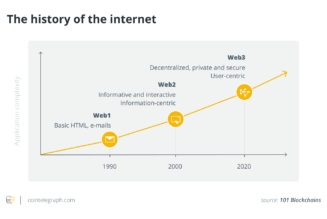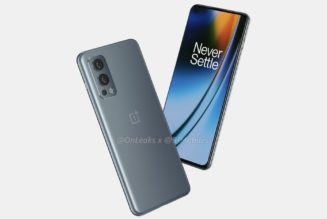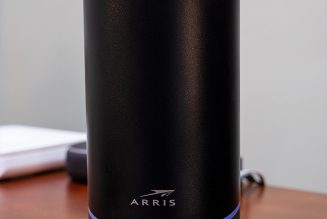Once upon a time, the Thinkpad X1 Yoga was Lenovo’s flagship business convertible, joining the clamshell X1 Carbon at the top of the company’s business hierarchy. These days, it has more company. We now have the paper-thin, titanium-coated X1 Titanium Yoga, the featherweight X1 Nano, and the powerhouse X1 Extreme kicking around, all of which are excellent, pricey, and could reasonably be considered flagships in their own right.
There’s a lot of innovation happening across the ThinkPad line, but the X1 Yoga retains a lot of the hallmark features that have graced old-school ThinkPads over the years. (With a starting tag of $1,493.40 — $2,315.28 as tested — that includes the premium price.) There are some subtle but important upgrades, of course, including a 16:10 (finally) touch display, a new gray color, a wider touchpad, and new security features that will mostly appeal to business users. It’s far from the most cost-effective Windows convertible you can buy, but it does have a lot to offer — especially to long-time ThinkPad fans looking for a modern spin on an established package.
Starting with what’s new: the 16:10 aspect ratio is here. This is a change that Lenovo has brought to other top ThinkPads this year, including the X1 Nano. I much prefer this to the 16:9 panel we saw on the Gen 5, because it provides noticeably more vertical space without adding much footprint to the chassis.
The other thing to note about this display is its matte texture — you don’t see matte touchscreens very often. Writing on it with the stylus feels basically the same as writing on a glossy panel, though the sound of the tip dragging along is a bit louder on the matte screen. (I also prefer touching the matte texture, though preferences vary.) Mainly, the matte texture makes colors look a bit muted compared to those on glossy screens, but you’ll also see significantly less glare, and work in bright settings is a much more doable prospect. The colors were sharp enough that watching videos was still enjoyable, and I could make out the details well enough, so I found the matte texture to be a positive overall. The panel also didn’t retain any smudges or fingerprints during my testing period.
:no_upscale()/cdn.vox-cdn.com/uploads/chorus_asset/file/22779116/mchin_210811_4712_0005.jpg)
:no_upscale()/cdn.vox-cdn.com/uploads/chorus_asset/file/22779114/mchin_210811_4712_0003.jpg)
The other notable change: the touchpad is bigger. Specifically, it’s 4.33 inches wide, where the Gen 5’s (much maligned by reviewers for its small size) was just four. It is plenty wide now, though it’s still a bit short, and my fingers hit the plastic frame often as I scrolled. If the trackpad is too cramped for you, the X1 Yoga offers you plenty of other ways to click: There’s a set of discrete buttons at the top of the touchpad (though they lack the red accents that often appear on ThinkPad clickers) as well as the signature ThinkPad TrackPoint in the center of the keyboard. And the unit comes with a tiny stylus, which lives in a garage on the right side of the chassis.
And then there are a number of updated security features, which Lenovo has drizzled across the ThinkPad line. There’s an optional IR webcam with human-presence detection which can automatically lock the computer if you’re not nearby (the webcam itself has a physical shutter, as ThinkPads traditionally do, and delivers a fairly grainy picture), a match-on-chip fingerprint reader in the power button, a dTPM 2.0 security chip (which encrypts user data on the system), and an optional feature called Privacy Guard which makes your screen harder to peek at from the sides.
But the most noticeable update is to the look. While the Gen 5’s chassis had some gray on it, the Gen 6 is gray everywhere, including the keyboard, touchpad, and hinge. This means that the Yoga looks a bit different from the sea of other ThinkPads out there, which are traditionally very black. It gives the X1 Yoga more of a futuristic vibe than devices like the X1 Carbon and the X13, though red and gray aren’t nearly as striking as red and black.
Anyway, to each their own on the aesthetic. What’s slightly disappointing is how easily scratchable the finish was. I folded my unit into a tablet and placed it onto an outdoor table for a few minutes for some brief drawing and writing, and when I picked it up there were scratches on the palm rests. I was afraid to let the device near anything remotely sharp after that. If this was the effect of a few minutes of writing, I worry about how scratched up this chassis could get from daily tablet use.
Otherwise, I have no complaints about the build quality. There’s a bit of flex in the keyboard deck, but none in the display, and there wasn’t any screen wobble while I was typing or touching the screen. The finish didn’t pick up many fingerprints (an issue I sometimes have with black ThinkPads). The hinge is smooth, making folding and unfolding a breeze — I could pop it open one-handed, with some difficulty. It’s also a fairly portable product, at three pounds and 0.59 inches thick, though a bit heavy to hold as a tablet for long periods.
:no_upscale()/cdn.vox-cdn.com/uploads/chorus_asset/file/22779117/mchin_210811_4712_0006.jpg)
:no_upscale()/cdn.vox-cdn.com/uploads/chorus_asset/file/22779115/mchin_210811_4712_0004.jpg)
Elsewhere, the X1 Yoga is very good. ThinkPad keyboards are world-renowned, and this one — while flatter than those of some of its siblings — is still comfortable with excellent travel. Note that like most ThinkPads, the Yoga has half-sized arrow keys, and the Fn and Ctrl keys swapped from where they are on the majority of other laptops, which takes a lot of getting used to. (You can remap those keys, but having incorrectly labeled keys can still be an eyesore to some.) The port selection is great, including two Thunderbolt 4 ports (a new addition to the X1 Yoga), a USB 3.2 Type-A, and an HDMI 2.0 on the left, as well as a USB 3.2 Type A, a headphone jack, and a lock slot on the right. The four 360-degree microphones did a fine job of picking up my voice. And the Dolby Atmos speaker system sounds great, with audible bass and very clear vocals.
The X1 Yoga Gen 6 has a million and one configurations, with all kinds of add-ons. One interesting thing: the cheapest listed model (currently $1,493.40) is actually a Linux model. The base specs include a Core i5-1135G7, 8GB of RAM (soldered), and 256GB of storage. My test model (running Windows 10 Pro, not Linux) is listed at $2,315.28 at B&H and includes a quad-core Core i7-1165G7, 512GB of storage, and 16GB of RAM.
Then there are the various extras. Windows 10 Pro will cost you $60 more than Windows 10 Home. You can bump up to a 3840 x 2400 screen, or a 1920 x 1200 screen with Privacy Guard. Both of these options are only available with the IR camera, which is $30 over the regular camera. Human Presence Detection, also only available with the IR camera, is an extra $15. And you can add 4G and 5G mobile broadband; prices vary depending on the modem you select.
:no_upscale()/cdn.vox-cdn.com/uploads/chorus_asset/file/22779118/mchin_210811_4712_0007.jpg)
The Core i7 utilized here is the same processor found in many of the best laptops on the market and is enough for all kinds of demanding workloads. Intel’s Iris Xe graphics card can lend a hand with work tasks and lighter gaming, though the X1 Yoga isn’t a gaming laptop by any stretch. Apps launched quickly, and I didn’t notice much stuttering or slowdown during my day full of streaming, photo editing, and Slacking on top of around a dozen Chrome tabs. Performance does depend somewhat on your battery profile more than with other Windows laptops — I had to switch off of Battery Saver when I was trying to run a Zoom call on top of a heap of tabs and apps because everything started freezing.
Speaking of battery, the X1 Yoga’s life span isn’t a disaster but was still just fine for a convertible at this price point. I averaged eight hours and seven minutes of continuous use with the screen at medium brightness. That’s not a bad result, but I’ve seen better from the top ultraportables at this level.
The final observation — which I’m probably a bit too happy about — is that there’s no bloatware on this thing. No McAfee, no Norton, no nonsense that I had to uninstall as soon as I turned it on. I generally hope that laptops above the $1,000 mark won’t come loaded with this stuff, but I regularly see them on pricey consumer laptops from all kinds of companies (including Lenovo). I’m glad that the ThinkPad isn’t loaded with any junk, but consumers should get this experience, too.
:no_upscale()/cdn.vox-cdn.com/uploads/chorus_asset/file/22779120/mchin_210811_4712_0009.jpg)
With so many add-ons and configurations, and prices ranging from $1,500 to over $3,000, the ThinkPad X1 Yoga can really be what you make it. It can be a midrange convertible with basic specs, or it can be a premium business laptop with the security emphasis characteristic of the ThinkPad line. Among the saturated sea of convertible ThinkPads out there, it’s absolutely one to consider.
With that said, it’s quite a pricey line for a consumer or self-employed worker. For context, you can get a comparable model of Lenovo’s top consumer convertible, the Yoga 9i, for just $1,529 — which even has the Core i7-1185G7, a step above the chip that came with my test model. X1 Yoga models with that processor start at $1,938. Like the X1 Yoga, the Yoga 9i has a convertible form factor, a physical webcam shutter, a built-in stylus, a one-year warranty, and most of the same software from Lenovo.
That raises the question of what all that extra money is really paying for. The X1 Yoga’s 16:10 aspect ratio is certainly a bonus, as are the lack of bloatware and the matte display. On the other hand, the 9i has better battery life (as do many consumer convertibles at that price), exceptional audio, and some truly innovative features like a haptic touchpad and an ultrasonic fingerprint reader. At a certain point, X1 Yoga buyers are really paying a premium for the ThinkPad build. ThinkPads have some unique aspects — their TrackPoint and the unique keyboard arrangement will always have their devotees — but they also have a sleek, professional look and feel. They’re known for their extreme durability (and the X1 Yoga is MIL-spec tested, though the X1 Yoga’s scratch-prone chassis and the flex in its keyboard gives me some pause on that front). Overall, like the MacBook’s bitten apple, the ThinkPad logo is a graphic anyone will recognize. It’s associated with a high level of build quality, longevity, and performance — it commands a certain status among business users and consumers alike.
Which is all well and good, if that’s what you want. If you’re looking for a modern ThinkPad that’s competitive with today’s best laptops, and especially if you’re interested in tidbits like Linux and human presence detection, this is probably your dream machine. I just feel obligated to note that if you’re so-so on the ThinkPad branding, you can get most of what this offers for much cheaper.
Photography by Monica Chin









